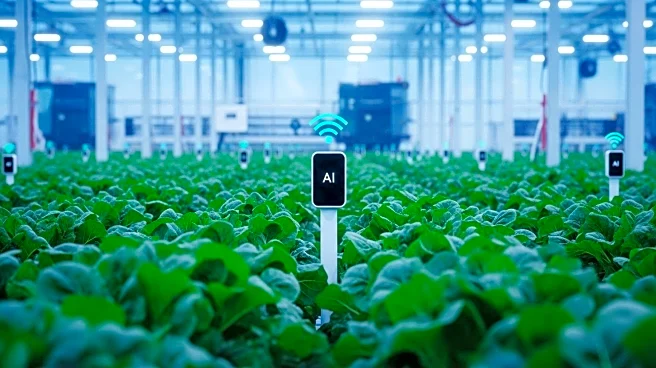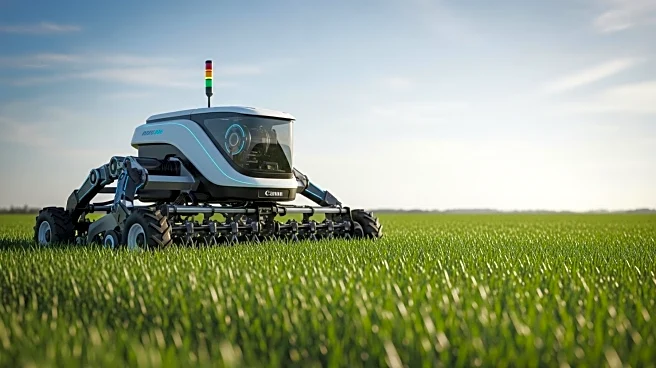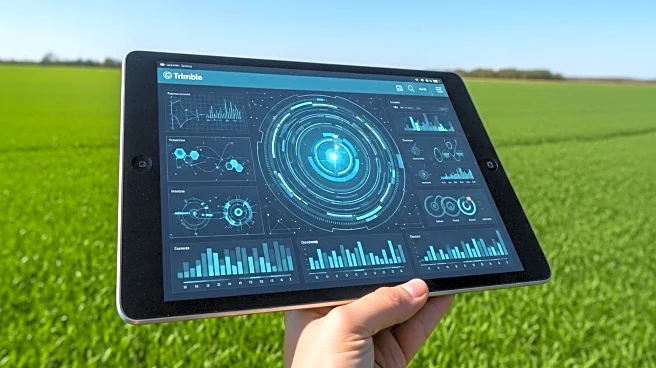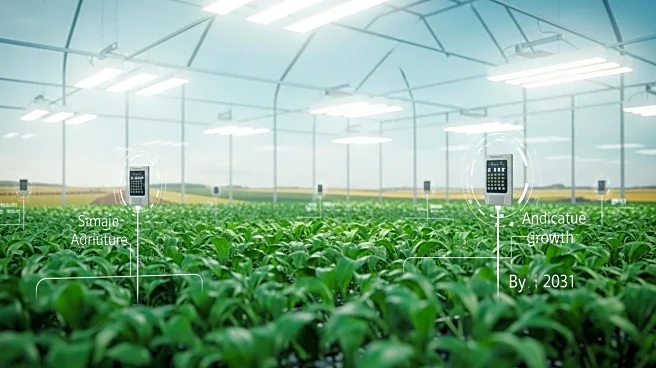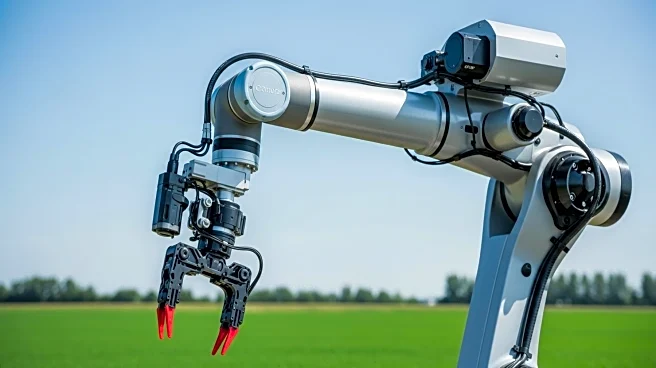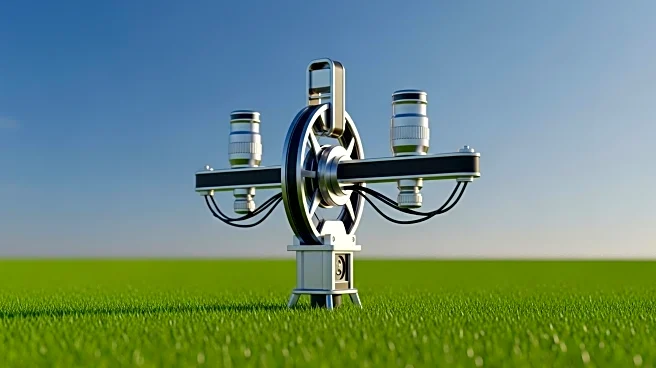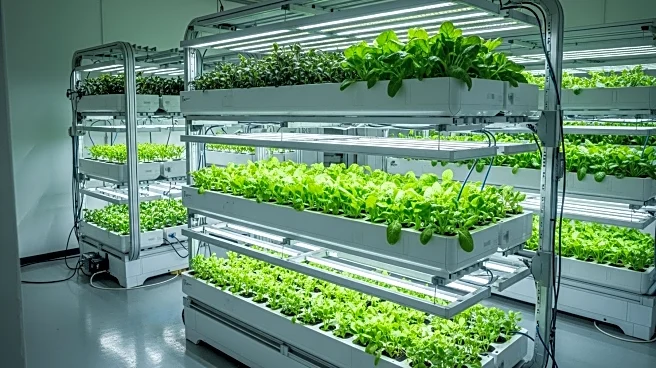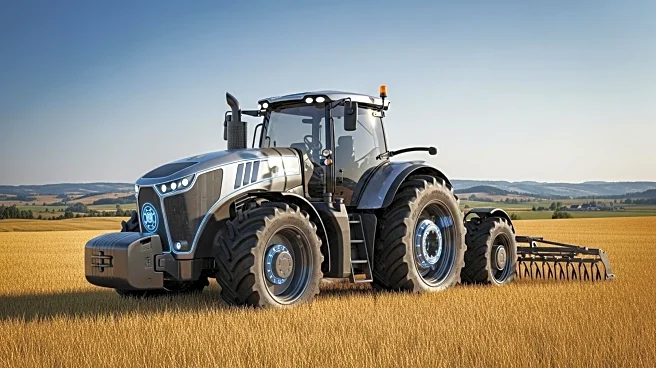What's Happening?
AGCO and John Deere have launched autonomous tractor technology aimed at revolutionizing tillage operations. The technology allows tractors to operate independently, performing tasks such as tillage and grain cart operations without direct human intervention. This development is part of a broader trend towards automation in agriculture, with companies like AGCO and John Deere working for years to achieve full autonomy. The autonomous systems are now commercially available, with farmers using them in the 2025 growing season. The technology includes features like guidance lines, automated turns, and implement guidance, which have been foundational for driverless tractors. Farmers can monitor and control these tractors using mobile apps, allowing them to focus on other aspects of their operations. The systems are compatible with various tractor models, and installation typically takes a day.
Why It's Important?
The introduction of autonomous tractor technology is significant for the agricultural industry, particularly in addressing labor shortages. By automating tillage operations, farmers can optimize planting schedules and improve efficiency. This technology also represents a shift towards precision agriculture, which can enhance productivity and sustainability. The ability to operate tractors autonomously allows farmers to manage their resources better and potentially reduce labor costs. As the agricultural sector faces challenges such as labor shortages and the need for increased productivity, autonomous technology offers a viable solution. It also aligns with broader trends in automation and technology integration in farming, which could lead to long-term changes in how agricultural operations are conducted.
What's Next?
As autonomous tractor technology becomes more widely adopted, further developments are expected in precision agriculture. Companies like AGCO and John Deere are likely to expand their offerings to include additional functions such as fertilizer spreading. The technology's compatibility with various tractor models suggests potential for broader adoption across different farming operations. Farmers and agricultural businesses may need to invest in training and infrastructure to fully leverage these autonomous systems. Additionally, ongoing advancements in technology could lead to more sophisticated autonomous solutions, further transforming the agricultural landscape.
Beyond the Headlines
The move towards autonomous farming raises ethical and legal considerations, particularly regarding labor displacement and the need for regulatory frameworks to ensure safety and reliability. As technology becomes more integrated into farming, there may be cultural shifts in how agricultural work is perceived and conducted. The long-term implications of automation in agriculture could include changes in rural economies and workforce dynamics, necessitating adaptation and policy responses.

